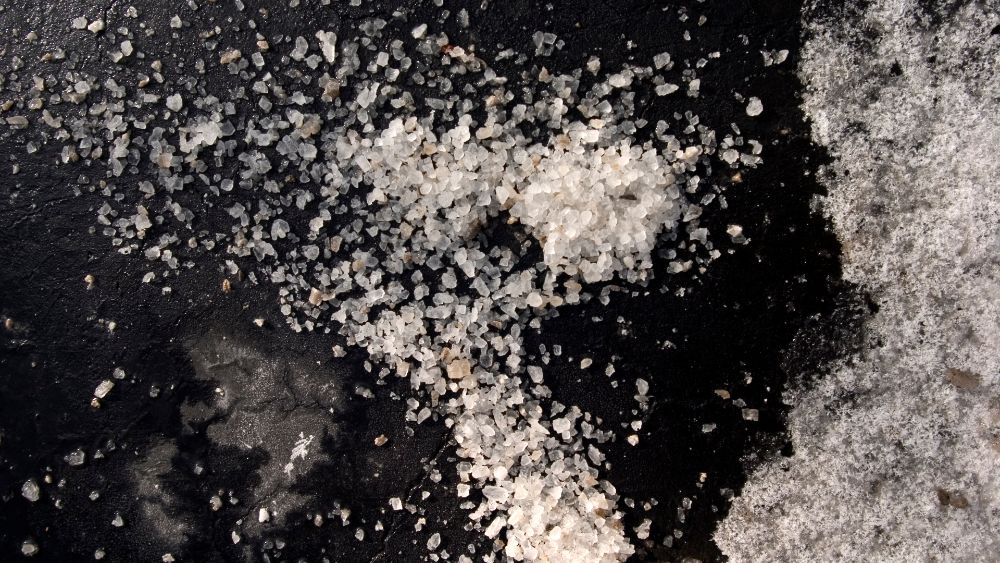Road salt is a winter staple in cold climates. Areas prone to ice and snow rely on salt and ice melt blends to keep roads passable and conditions safe.
Yet, it takes time for the salt to do its job and melt the ice.
It can take salt 20-60 minutes to melt ice, depending on the temperature, ice thickness, quantity, and type of salt used. At 30°F (-1°C), one pound of salt (Sodium chloride) can melt 46.3lbs of ice in five minutes. At 15°F (-9°C), it takes an hour for one pound of salt to melt 6.3lbs of ice.
Several factors impact how long it takes for salt to melt ice. Let's explore some of the variables to help you prepare for the winter ahead.
| Pavement Temperature (°F/ºC) | Amount of Ice Melted by 1 lb (0.45kgs) of NaCl | Melt Times |
| 30ºF / -1ºC | 46.3 lbs / 21 kgs | 5 minutes |
| 25ºF / -4ºC | 14.4 lbs / 6.5 kgs | 10 minutes |
| 20ºF / -7ºC | 8.6 lbs / 3.9 kgs | 20 minutes |
| 15ºF / -9ºC | 6.3 lbs / 2.9 kgs | 60 minutes |
| 10ºF / -12ºC | 4.9 lbs / 2.2 kgs | N/A |
| 5ºF / -15ºC | 4.1 lbs / 1.9 kgs | N/A |
| 0ºF / -18ºC | 3.7 lbs / 1.7 kgs | N/A |
| -6ºF / -21ºC | 3.2 lbs / 1.45 kgs | N/A |
Factors That Affect How Long Salt Takes To Melt Ice
Ice, temperature, and time have an exponential relationship. The colder the temperature, the more time it takes for ice to melt, and the less ice gets melted.
Here are some other factors that play a role.
Thickness of ice
The thicker the ice, the longer it will take to thaw when salt is applied.
When salt is applied to ice, it starts working on the thin melt layer on top of the ice.
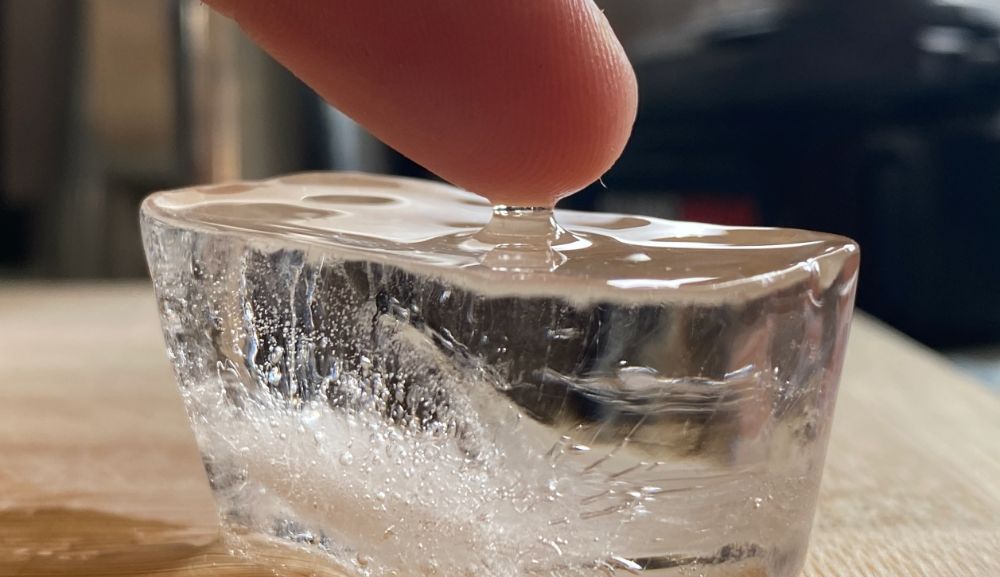
Even in frigid conditions, ice will have a thin layer of water on top, though you may be unable to see it.
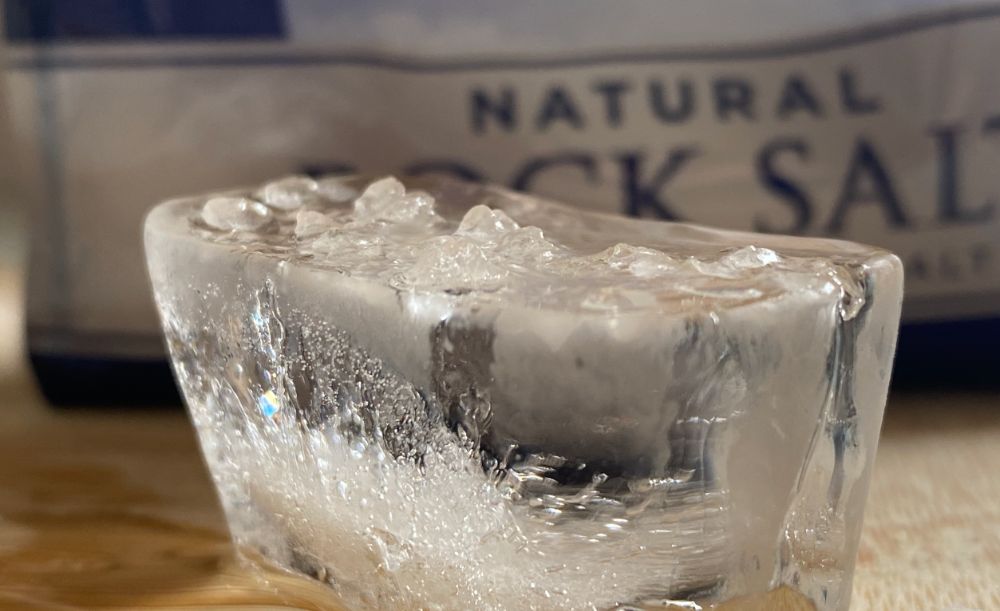
The salt continues to work downward.
As the ice absorbs the heat from the liquid, each layer melts faster as the water accumulates on top.
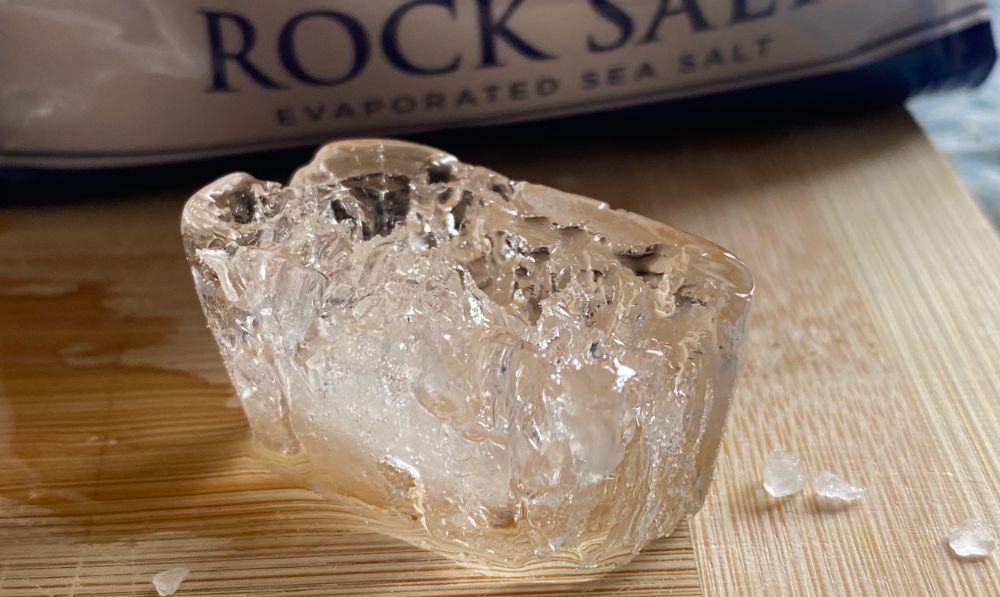
The thicker the ice, the longer the process will take.
Outside temperature
The outside temperature directly impacts the efficacy of salt on ice, thanks to freezing point depression.
Adding salt ice interrupts the molecular bond that allows the water molecules to transition from a liquid to a solid. This depresses the temperature at which ice will freeze.
Ice typically freezes at 32ºF (0ºC). Salt lowers the freezing point of water to around 16ºF (-9ºC). This also depends on the type and amount of salt used.
So, salt will thaw ice in subzero temperatures. However, the closer the temperature gets to the new freezing point of 16ºF (-9ºC), the longer it will take for the salt to melt the ice and the less effective it will be – especially in smaller quantities.
If the temperature drops below 16ºF (-9ºC) the salt may become ineffective and be unable to melt the ice.
This depends on the type of salt used.
Calcium chloride is commonly used in cold areas instead of sodium chloride (common rock salt) because calcium chloride can work in temperatures as low as -25ºF (-31.7ºC).
Temperature of ice
The temperature of the ice also makes a difference in how fast the salt will work.
If the ice temperature is closer to the freezing/melting point, the salt will work faster. Conversely, if the ice temperature is far colder than the freezing point, it will take longer.
Consider two scenarios. In one, the nighttime temperature dropped to 14ºF (-10ºC), just slightly below the freezing point of salted ice.
The sun rises, and the temperature hits 32ºF (0ºC). You put salt on your walkway and notice a difference by the time you get in your car to go to work.
In the other scenario, the nighttime temperature drops to -4ºF (-20ºC). All other variables remain the same, but you don't notice much of a difference when you get in the car to go to work.
The difference is that the ice got colder in the second scenario, so it will take longer to thaw even with salt and prime daytime melting conditions.
Surface temperature
The surface temperature beneath the ice may also impact the salt's effectiveness.
The melt times provided above are based on paved roads. Salt doesn't work (or causes more harm than good) on unpaved roads.
If you have a concrete driveway or walkway, the salt could take longer to work.
Concrete is more reactive to ambient temperature than pavement. It effectively stores the ambient temperature for longer.
For example, asphalt pavement tends to be hotter than concrete surfaces during the day. At night, the asphalt cools quickly while concrete retains the warmth for longer.
Bridges add another layer of complexity as they freeze faster and get colder than asphalt.
Many bridges contain concrete as a key component. They also have greater surface area than a road (which has miles of earth underneath) that is exposed to the surrounding temperature.
Amount of Salt Used
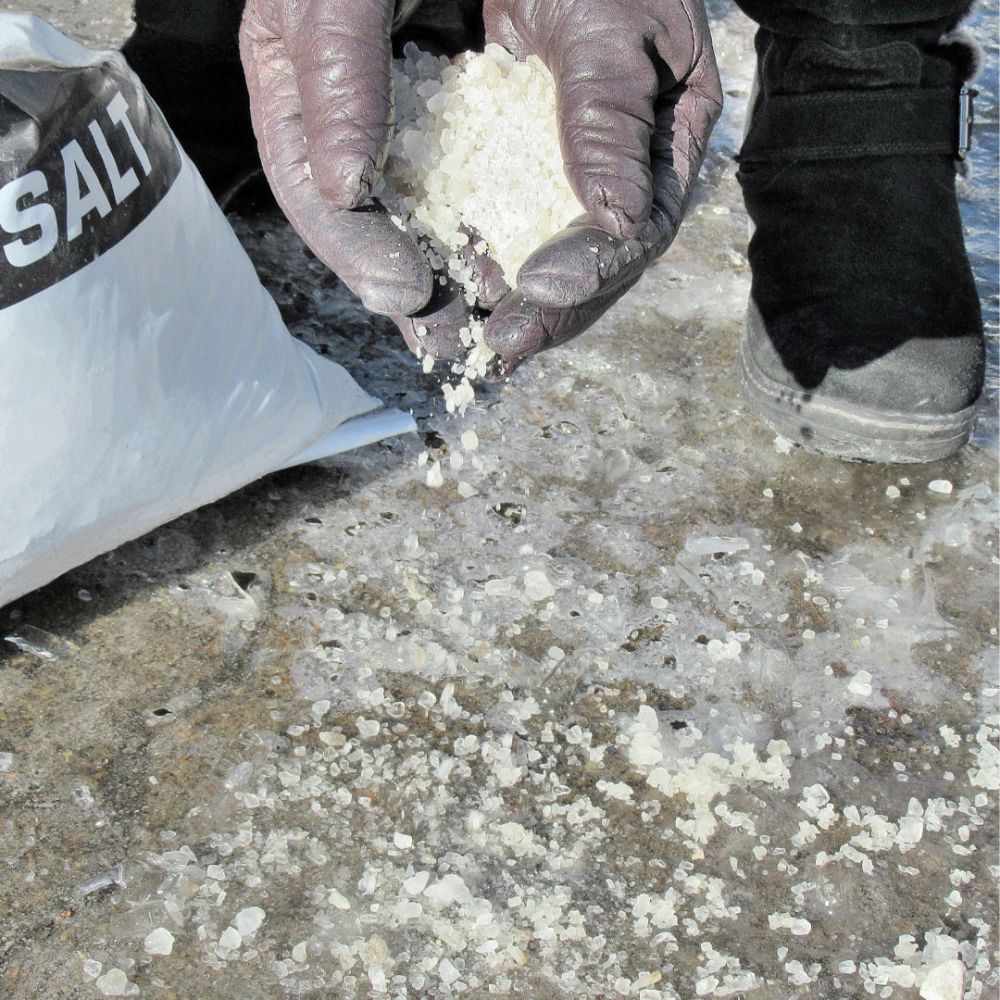
The quantity of salt you use will also impact how fast the ice melts. The more surface coverage, the better the results.
However, it's important to remember that salt can be costly and has corrosive and environmental impacts. It's better to use a little less and give it more time.
When used in large quantities salt can cause damage to concrete as well as plants, pets and vehicles.
You usually want to use as little salt as possible to get them job done. How much you use will depend on the factors mentioned above like temperatures, ice thickness etc.
Size of Salt Crystals
The size of the salt crystals will also impact how quickly salt melts. Surprisingly, smaller salt forms are more effective.
Salt crystals with more surface area, like table salt, are more effective as ice melts. Larger crystals, like kosher salt, will take longer but will penetrate deeper ice faster.
Yet, larger crystals like rock salt are easier to spread over broad areas and add traction while melting the ice. They also are less likely to blow away in the wind giving them time to work and they are cheaper to purchase.
So larger rock salt crystals are often the salt of choice for deicing roads, driveways and pavements. But recently liquid salt spray is becoming more popular as it can be more effective and more cost effective.
Type of Salt Molecule
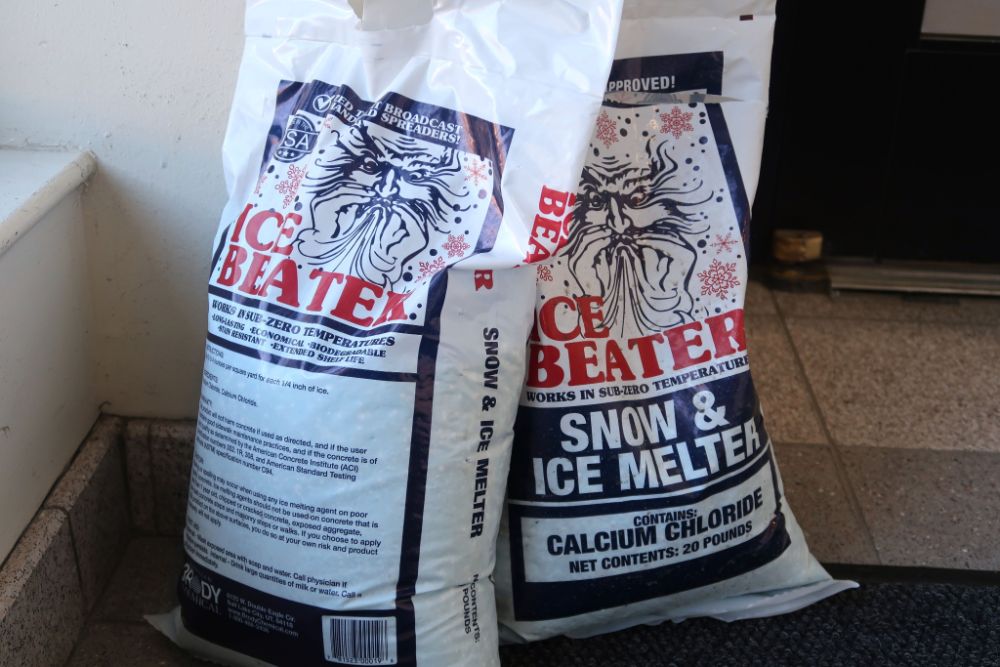
Salt is an umbrella term for several compounds— some of which don't even contain sodium.
While we tend to think of table salt and rock salt (sodium chloride), many ice melt products are made from magnesium chloride or calcium chloride.
Magnesium chloride and calcium chloride further decrease water's freezing point, making these options faster and more effective at colder temperatures.
You've likely heard that road salt doesn't work below a certain temperature – other ice melts do work in lower temperatures and so will be the ice melt of choice in warmer climates.
It's also suggested that calcium chloride may be less damaging to concrete than other types of salt due to minimize the refreezing process.
How Long Does It Take Salt To Melt Ice On A Driveway or Path?
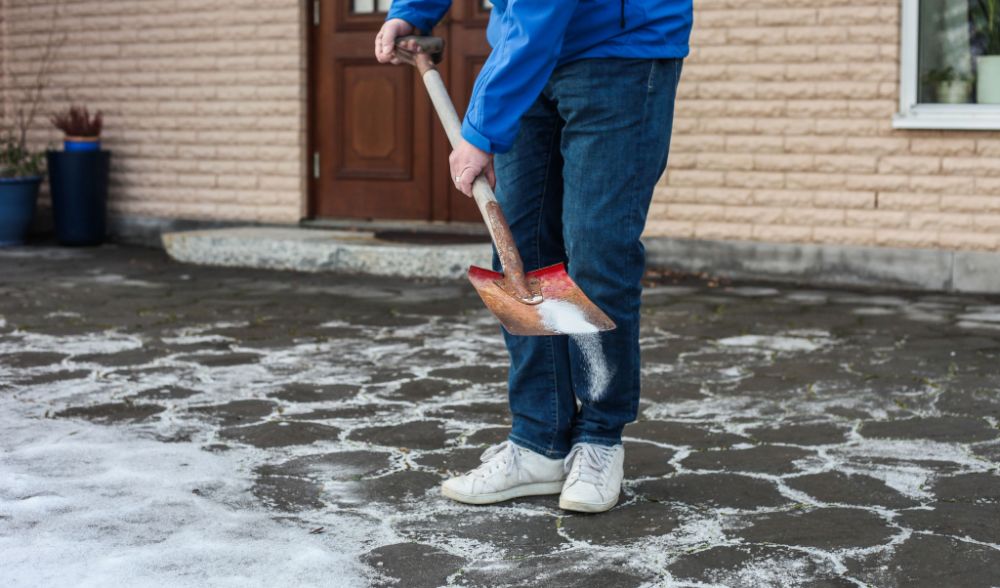
It can take salt anywhere from five minutes to an hour to melt ice on a driveway or path, depending on the temperature and conditions.
If you live in an area that gets colder than 16ºF (-9ºC), consider a calcium-chloride or magnesium-chloride based ice melt instead of regular rock salt.
Does Salt Melt Ice Immediately?
Salt starts working on the ice immediately.
However, it takes time for the salt to work its way through the ice and melt it entirely.
Will Salt Melt Ice Overnight?
Salt will melt ice overnight if the temperature doesn't decrease below its effective working temperatures.
For example, regular rock salt (NaCl) has an effective working temperature of 16ºF (-9ºC) after which it stops melting ice.
If night time temperatures are above 16ºF (-9ºC) then salt will still melt ice overnight. However, if temperatures drop below this then the ice will still freeze over and the salt won't be effective until temperatures rise again.
The sun helps speed up the process by increasing the ice and air temperature.
At What Temperature Does Salt No Longer Melt Ice?
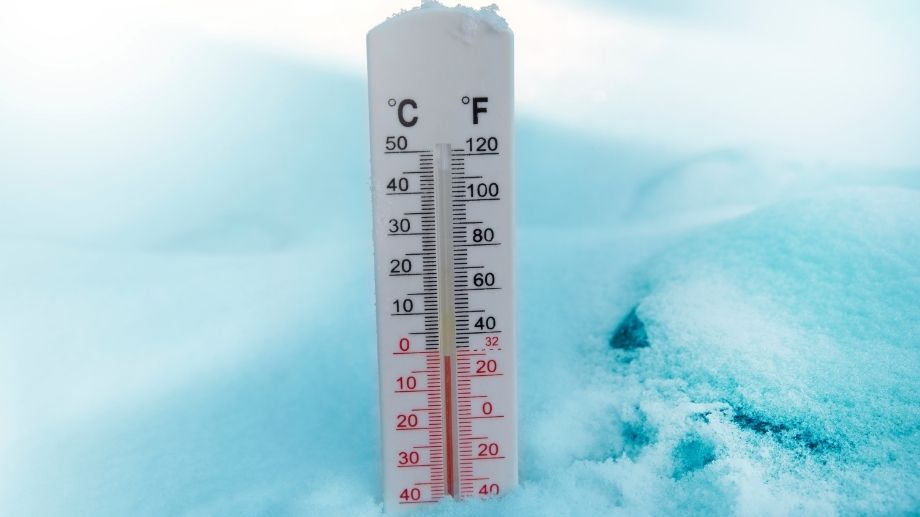
Salt doesn't have a hard cutoff point as to when it stops working. It is a sliding scales where it becomes less and less effective as temperatures drop lower and lower.
Salt becomes a lot less effective at 16ºF (-9ºC), which tends to be the new freezing point of water when salt is added.
Beyond that, ice will remain stubbornly frozen unless conditions change.
Alternatives to rock salt like Magnesium Chloride and Calcium Chloride have lower melting points.
Magenisum Chloride works down to around 5ºF (-15ºC) and Calcium Chloride works down to temperatures as low as -25ºF (-31.7ºC).

